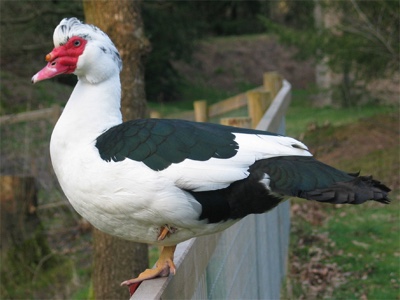Duck Typing with Types of Ducks
One of the most insidious destroyers of code is the nil.
Raise your hand if you’ve had to sift through piles of functions and files to track down an unexpected nil.
Me too.
Ruby doesn’t come with a way to create explicit interfaces.
Instead, we create implicit interfaces.
These interfaces are built one method at a time.
Each method sent to an object adds to that interface.
If the object provided adheres to the interface then we accept it.
We duck type.
Our only safety net is NoMethodError.
We can use this net to protect ourselves.
We can defend against nil.
Rouen vs Muscovy
If it quacks like a duck, it’s a duck. That’s the idea anyway. While that is true we can shape the type of duck doing the quacking. We can hone our interface to pick the right duck. It’s not a duck, it’s a Muscovy duck.

Let’s take a moment to consider the bacon cannon.
You’ll find that =~ works with pretty much anything you give it.
> 'abc' =~ /a/
# => 0
> true =~ /a/
# => nil
> (1..10) =~ /a/
# => nil
> nil =~ /a/
# => nil
The bacon cannon is unstoppable! Which is bad news for us. Image a method designed to see if a string starts with a vowel.
def starts_with_vowel?(text)
text =~ /\A[aeiou#{'y' if rand > 0.5}]/i
end
That’s how “and sometimes y” works, right?
Our method will happily take any object given and roll with it.
Really though, we wanted a String or something similar.
We weren’t looking to take nil or a Range.
If we remember back, you can use the accessor method to match against a String.
It’s worth noting that [] isn’t so kind to strangers.
def starts_with_vowel?(text)
text[/\A[aeiou#{'y' if rand > 0.5}]/i]
end
Let’s run through that first list again.
> 'abc'[/a/]
# => "a"
> true[/a/]
# => NoMethodError: undefined method `[]' for true:TrueClass
> (1..10)[/a/]
# => NoMethodError: undefined method `[]' for 1..10:Range
> nil[/a/]
# => NoMethodError: undefined method `[]' for nil:NilClass
By using [] instead of =~ we’ve kept the integrity of the method while adding specificity.
We’ve specified the type of duck more accurately.
Getting Our Ducks in a Row
There’s no easy formula to follow here.
In fact the example above can be thwarted with a Hash.
Even so, we’ve narrowed the options and stopped a nil from propagating.
With practice and mindfulness we’ll start finding methods that help enforce intent.
The key is intentionality.
We must understand that the methods we call shape the objects we allow.
